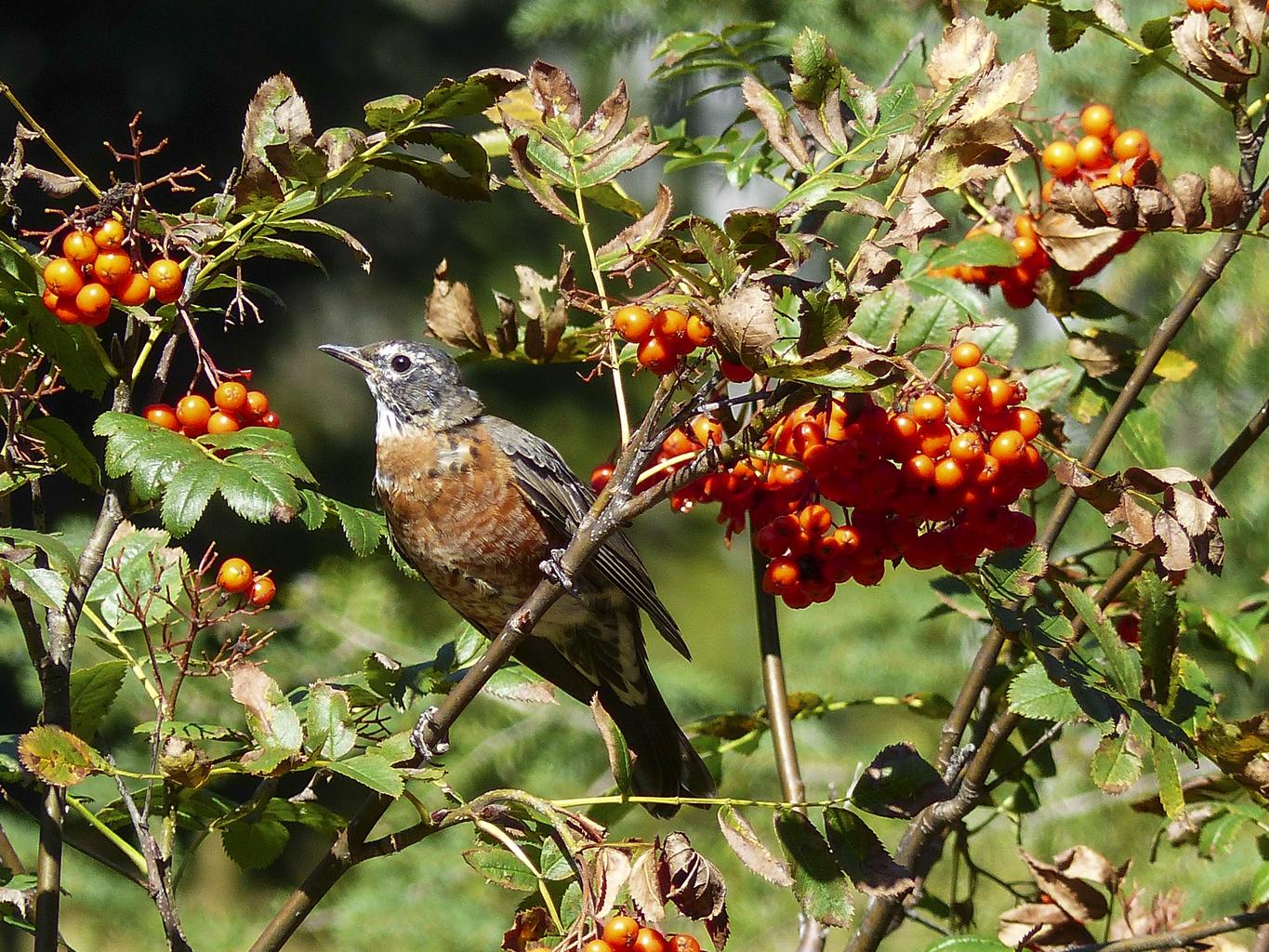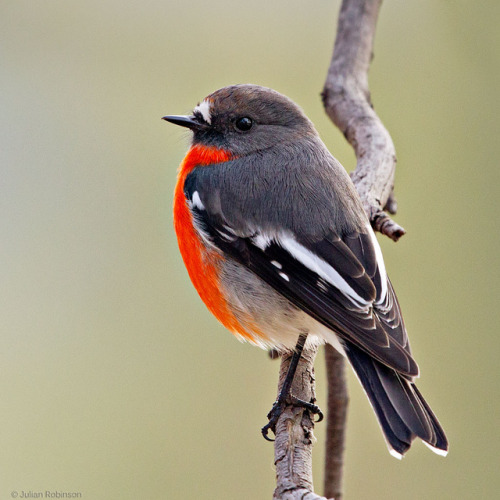

Research by the Australian Museum (Major et al., 1999) has shown that male Red-capped Robin density is much lower in small, linear bushland remnants than in large non-linear remnants. Predators of nestlings include the Grey Shrike-thrush, Colluricincla harmonica, and the Grey Butcherbird, Craticus torquatus. Once the young have fledged, they may remain in their parents’ territories for up to one and a half months before dispersing. The female incubates the eggs alone and both sexes feed the young. The male feeds the female during nest-building and incubation. The female chooses a nest site in a tree fork and builds an open, cup-shaped nest of bark, grass, and rootlets, bound together with spider web, lined with soft materials, often camoflaged with lichen, bark and mosses. The American robin is named after the European robin, which is often called a red robin. The male sings from perches around the boundary of the territory to deter other Red-capped Robins and also other robin species, such as the Scarlet Robin, P. According to the Spiritual Center, these special birds are believed to be a reminder that the spirit of our loved ones is still present and watching over us. It is a little, earthy coloured European bird with a red front or a comparable yet marginally bigger brown coloured bird of North America.


Red-capped Robins breed in pairs within a breeding territory established and defended by the male. Males sing with characteristic dry, repeated trill: ‘dit-dit-drr-it’. Young birds are similar to females but are streaked white above, have a pale buff wing bar, and their breast and sides are streaked or mottled dark brown. Robins are popular birds for their warm orange breast, cheery song, and early appearance at the end of winter. Females are quite different in appearance: grey-brown above and off-white below, with a reddish cap, brown-black wings barred buff to white, and some have faint red on the breast. The quintessential early bird, American Robins are common sights on lawns across North America, where you often see them tugging earthworms out of the ground. The black wing is barred white and the tail is black with white edges. The male Red-capped Robin is black above and white below with a distinctive scarlet-red cap, white shoulders, and a red breast that contrasts strongly with a black throat. Often tame, confiding and curious, the Red-capped Robin is regularly recorded as part of mixed-species feeding flocks, often joining with other small insectivorous species, especially with various species of thornbills.


 0 kommentar(er)
0 kommentar(er)
